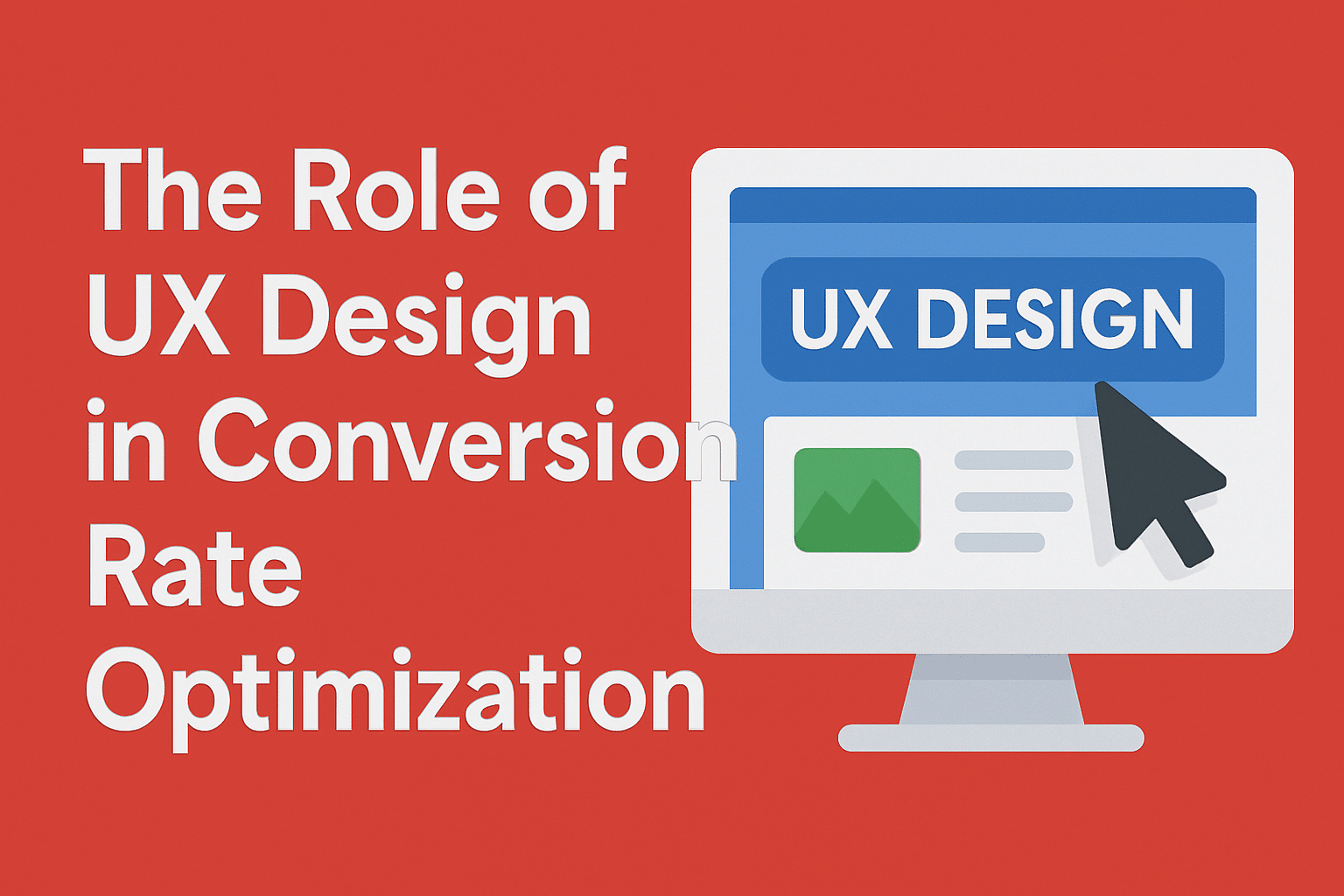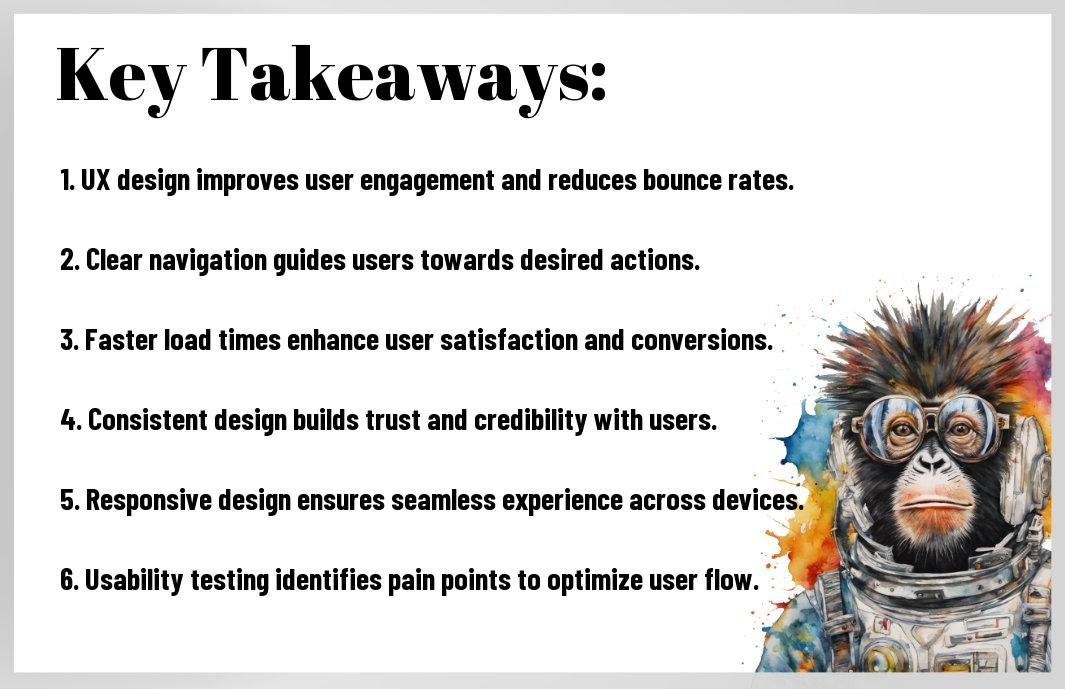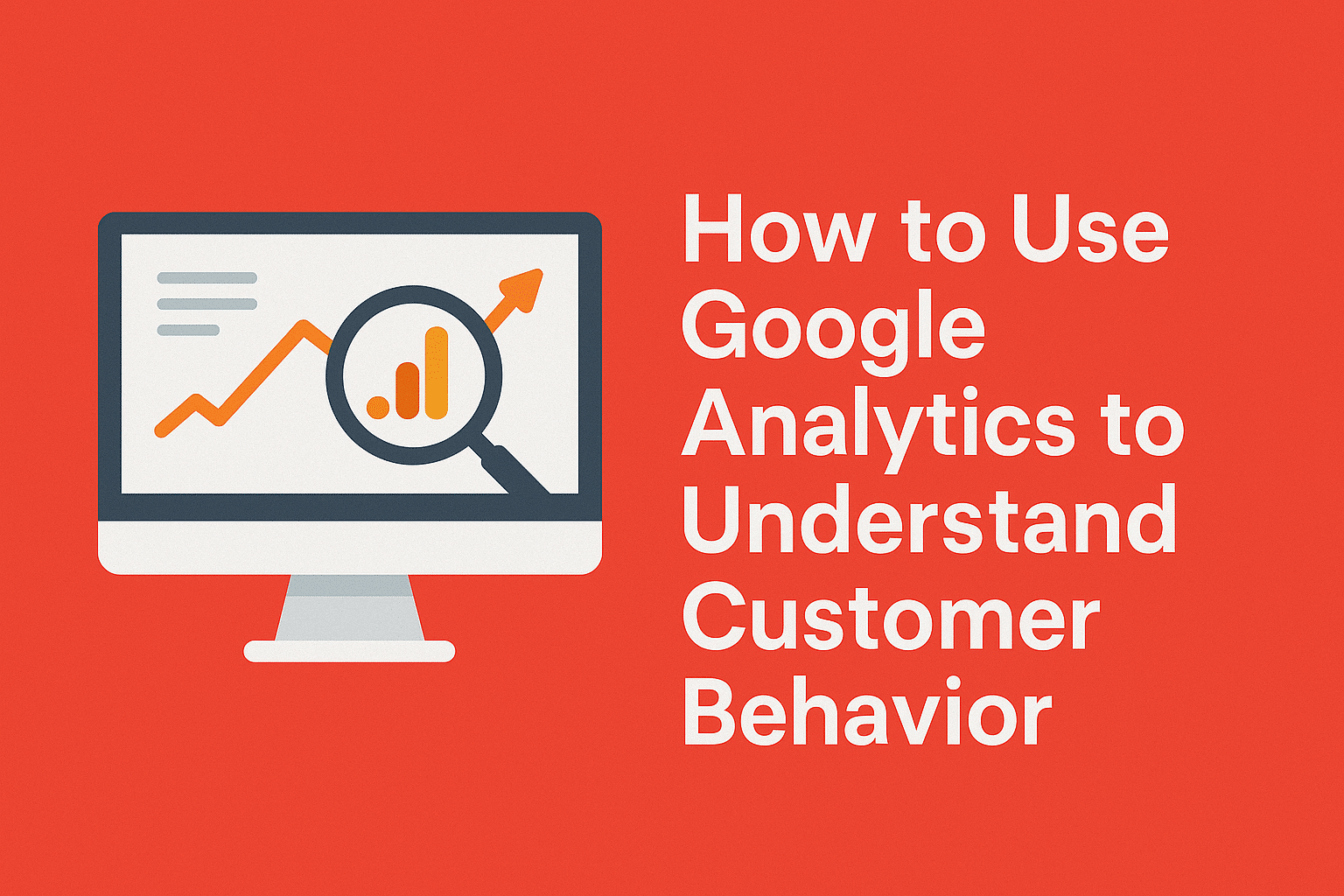Social media marketing can be significantly enhanced through effective use of web analytics. When you…

The Role of UX Design in Conversion Rate Optimization
Many businesses underestimate the impact of UX design on their conversion rates. As you refine your website or application, it’s vital to understand how user experience influences your audience’s decisions. Effective UX design not only enhances usability but also builds trust and encourages action, ultimately leading to improved conversions. By prioritizing your users’ needs, you can create a seamless journey that resonates with them and boosts your bottom line. Dive into the key principles of UX design and see how they can transform your conversion rate into a stronger asset.
Table of Contents
Key Takeaways:
- Effective UX design enhances user satisfaction, which can directly impact conversion rates by ensuring a seamless experience throughout the customer journey.
- Optimizing site navigation and layout can reduce friction; clear pathways guide users toward desired actions, increasing the likelihood of conversions.
- Utilizing data-driven design decisions, such as user feedback and analytics, allows for targeted improvements that meet user needs and preferences.
- Creating trust through elements like professional design, testimonials, and clear communication fosters a sense of security, encouraging users to engage and convert.
- Regularly testing different design elements, such as call-to-action buttons and landing pages, can reveal insights that significantly enhance performance and boost conversions.
The Psychological Triggers that Drive User Decisions
Understanding the psychological triggers that influence user decisions can significantly enhance your conversion strategy. Factors such as urgency, scarcity, and social proof trigger emotional responses that compel users to take action. By strategically incorporating these elements into your design, you can create a more persuasive user experience that encourages conversions. For instance, displaying limited-time offers can create a sense of urgency, while showcasing testimonials emphasizes social proof, both of which are integral in influencing user behavior to say ‘yes’ to your offers.
The Role of Emotion in User Experience
Emotions play a pivotal role in user decision-making, often overriding logic. Your design should evoke feelings that resonate with your audience, creating a memorable experience. Whether it’s through calming colors or engaging storytelling, tapping into emotions can make your platform more relatable and trustworthy. This emotional connection not only enhances user satisfaction but can transform casual visitors into loyal customers.
Utilizing Cognitive Biases to Increase Conversions
By leveraging cognitive biases, you can subtly guide users toward taking desired actions. Cognitive biases like the anchoring effect or the bandwagon effect can be employed in design to influence choices in a way that drives conversions. For example, prominently displaying a higher-priced item next to your actual offering can make your product seem more attractive, thanks to the anchoring effect.
Delving deeper into cognitive biases reveals how powerful they can be in decision-making. The availability heuristic suggests that individuals are more likely to consider something as valid simply because they can easily recall similar instances. By showcasing positive reviews or case studies, you make it easier for users to envision themselves having a similar positive experience. Additionally, the loss aversion bias indicates that users prefer to avoid losses over acquiring equivalent gains. Using phrases like “Don’t miss out” in your call-to-action can heighten the sense of urgency and encourage immediate action. These biases, when skillfully applied, can lead to a significant boost in conversion rates.
Designing for Clarity: Streamlining User Journeys
Streamlining user journeys is important to ensure your visitors can navigate your website with ease. A clear and intuitive design allows users to find what they need without frustration, directly impacting conversion rates. By prioritizing core actions and minimizing distractions, you can enhance the overall user experience. Explore more insights on The Role of UX in Conversion Rate Optimization to further enhance your strategies.
Importance of Visual Hierarchy in UX Design
Effective visual hierarchy helps guide users’ attention to the most critical elements of your site. By using contrasting colors, varying font sizes, and strategic spacing, you can emphasize calls to action and important information. This approach not only improves the aesthetic appeal but also enhances usability, as users instinctively know where to focus their efforts.
The Impact of Navigation on User Retention
Smooth navigation is a key factor in keeping customers on your site longer and increasing their likelihood of conversion. If users encounter a complicated or confusing navigation structure, they are more likely to abandon the site altogether. Implementing a straightforward navigation system can significantly boost user retention, as it allows for an effortless browsing experience.
The effectiveness of your website’s navigation is often reflected in user behavior analytics. For instance, studies show that websites with intuitive navigation see up to a 50% increase in user retention. Simple adjustments, such as limiting menu items and ensuring responsive design, can retain users’ attention. Prioritizing a logical information architecture not only aids in maintaining engagement but also encourages users to explore your offerings further, ultimately leading to increased conversions.
The Interplay Between Aesthetics and Functionality
A successful UX design weaves together aesthetics and functionality to create an engaging user experience while driving conversions. A visually appealing website attracts users, but if it lacks intuitive navigation and seamless functionality, visitors will quickly abandon it. Striking the right balance between eye-catching design and practical usability is vital for ensuring that your audience remains engaged and ultimately converts.
Balancing Beauty and Usability
Achieving harmony between beauty and usability means selecting design elements that resonate with your audience while supporting their journey. Prioritizing user-centric design allows you to craft visually stunning interfaces filled with intuitive pathways, guiding users effortlessly to desired actions.
The Power of Consistency in Design
Consistency across your website fosters familiarity and trust, greatly influencing user behavior. By applying uniform colors, typography, and layout, you create a cohesive experience that encourages users to engage further with your content. This sense of predictability not only enhances usability by minimizing confusion but also reinforces brand identity, which can lead to higher conversion rates. For example, brands like Apple maintain strict design guidelines that create a recognizable and seamless experience across all platforms, allowing for an effortless transition from one product to another. If you want to create a lasting impression and drive conversions, incorporate consistent design elements that align with your overall brand vision.
Data-Driven Design: Testing for Success
Utilizing a data-driven approach elevates your UX design efforts by seamlessly integrating testing into the design process. This method allows you to gather valuable insights about user behavior and preferences, leading to informed design decisions that enhance the overall user experience. When you combine qualitative and quantitative data, your designs become more aligned with user needs, which can significantly boost conversion rates. Discover more on why CRO and UX are a match made in heaven?
Leveraging A/B Testing for UX Improvements
A/B testing serves as a powerful tool for refining your UX design. By presenting users with different variations of a page or feature, you can measure which design resonates more with your audience. This direct feedback helps you optimize elements like layout, color schemes, and call-to-action buttons. The results can lead to smarter design choices that directly impact your conversion rates, turning insights into actionable improvements.
Interpreting User Feedback to Enhance Designs
User feedback is a goldmine for enhancing your UX designs. By analyzing both direct feedback from user testing sessions and indirect feedback from sources like surveys or reviews, you can uncover specific pain points or areas where users struggle. Such insights allow you to make precise improvements that can simplify navigation or clarify communication, ultimately creating a more intuitive user experience.
Diving deeper into user feedback isn’t just about identifying problem areas but also understanding user motivations and preferences. For instance, if users repeatedly mention confusion over a specific button’s function, you might redesign the button or reword the surrounding copy for clarity. Additionally, the trends in user feedback can guide future feature development, helping you prioritize improvements that add the most value to your customers. By focusing on real user experiences, you enhance your designs and create a more engaging interface that encourages conversion.
Future Trends: The Evolution of UX in Conversion Optimization
The landscape of UX design is continuously evolving, with emerging trends shaping the way websites and applications optimize for conversions. As user behaviors shift and technological advancements unfold, embracing adaptive UX strategies becomes vital for maintaining competitive edges. Recent data indicates that companies prioritizing UX are seeing conversion rates rise by up to 400%, a testament to the strategic importance of staying ahead. The future is not just about functionality but also about creating experiences that resonate with users on a personal level.
The Rise of Personalization and AI in UX Design
Personalization is fast becoming a cornerstone of effective UX design, driven significantly by artificial intelligence. By leveraging user data, AI enables you to tailor experiences, ensuring content and interfaces align with individual preferences and behaviors. Recent surveys show that a staggering 80% of consumers are more likely to make a purchase when brands offer personalized experiences, highlighting the transformative power of AI-driven UX strategies.
Emerging Technologies and Their Impact on User Experience
With emerging technologies like augmented reality (AR), virtual reality (VR), and voice interfaces, the potential to enhance user experiences is unprecedented. These technologies enable you to create immersive interactions that captivate users while guiding them seamlessly through conversion paths. For instance, AR can allow customers to visualize products in their own environment, leading to a significant boost in purchase confidence. As these tools integrate with UX, you can expect richer, more intuitive experiences that ultimately drive higher conversion rates.

Final Words
So, as you explore the potential of UX design in enhancing your conversion rates, understand that a well-structured user experience not only fosters engagement but also drives more meaningful interactions with your audience. By focusing on intuitive design and user needs, you can significantly impact how your visitors perceive and interact with your brand. For more insights, check out The Role of User Experience in Conversion Optimization to deepen your understanding and apply effective strategies.
FAQ
Q: What is the relationship between UX design and conversion rate optimization (CRO)?
A: UX design focuses on enhancing user satisfaction by improving the usability, accessibility, and overall experience of a product. CRO aims to increase the percentage of website visitors who take desired actions, such as making a purchase or signing up for a newsletter. By incorporating effective UX design principles, businesses can create intuitive and user-friendly interfaces that guide users toward conversion, thus directly influencing their overall conversion rates.
Q: How does UX design affect user trust and credibility in a website?
A: A well-designed UX fosters a sense of trust and credibility. When users encounter aesthetically pleasing, easy-to-navigate websites with clear information and seamless interactions, they are more likely to feel secure in their online experiences. High-quality UX design includes elements such as consistent branding, straightforward messaging, and transparent navigation, all of which contribute to users’ confidence in a site and can significantly enhance conversion rates.
Q: What are some key UX design elements that can improve conversion rates?
A: Several UX design elements can have a positive impact on conversion rates, including intuitive navigation, clear calls-to-action (CTAs), responsive design, and optimized loading speeds. Other necessary aspects include the use of visually appealing and relevant images, concise and compelling content, and accessible forms. By optimizing these elements, designers can create an engaging user experience that encourages visitors to convert.
Q: How can user testing inform UX design decisions for optimization?
A: User testing provides valuable insights into how real users interact with a website or product. By observing user behavior, designers can identify pain points and areas for improvement. Techniques like A/B testing, usability testing, and user feedback sessions can help fine-tune UX elements based on actual user experiences. Implementing the findings from user testing enables businesses to enhance designs that drive conversions based on user needs and preferences.
Q: What metrics should be monitored to evaluate the effectiveness of UX design on conversion rates?
A: To assess the impact of UX design on conversion rates, several metrics can be tracked, including the conversion rate itself, bounce rate, average session duration, and user engagement levels. Tools like heat maps can reveal where users click and scroll, while conversion funnel analysis illustrates how they navigate toward desired actions. Monitoring these metrics provides insights into user behavior and allows for data-driven adjustments to enhance the overall design and improve conversion outcomes.



